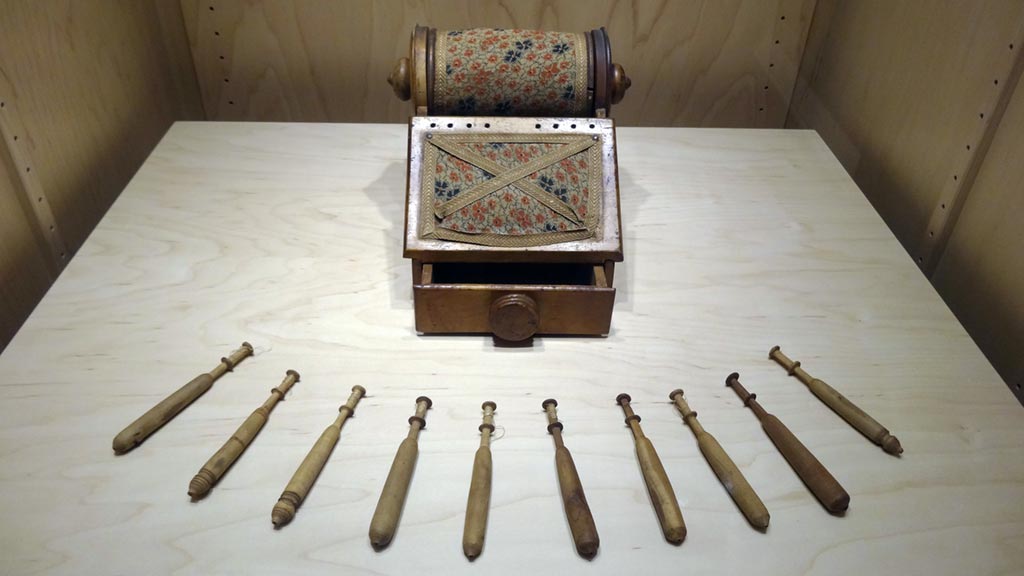
Textile Manufacturing and Tools of Female Independence
- Duration:Temporary
- Location:Whitten Featured Object Case
(date) 5/6/2014–9/14/2014
The tools in these two cases demonstrate not only methods of European textile manufacturing but also tools of female independence at a time when women’s roles in society were somewhat constrained. Spinning and bobbin lace making were professions firmly in the hands of women. Women and girls of all ages and throughout all classes of society in Western Europe between the seventeenth and early twentieth centuries practiced these activities. Although both crafts were also popular leisure activities in urban, middle class, and aristocratic environments, they were very important sources of income within rural communities.
At a time when men were the main providers of the family, and when the labor market and industries relied primarily on male workforce, having a personal income meant a lot to women. It enabled them to help support their families or earn their own living, giving them a bit of independence. For example, in France, the producers of bobbin lace were mostly widows or single women, giving them opportunity to earn income in the absence of a male provider.


